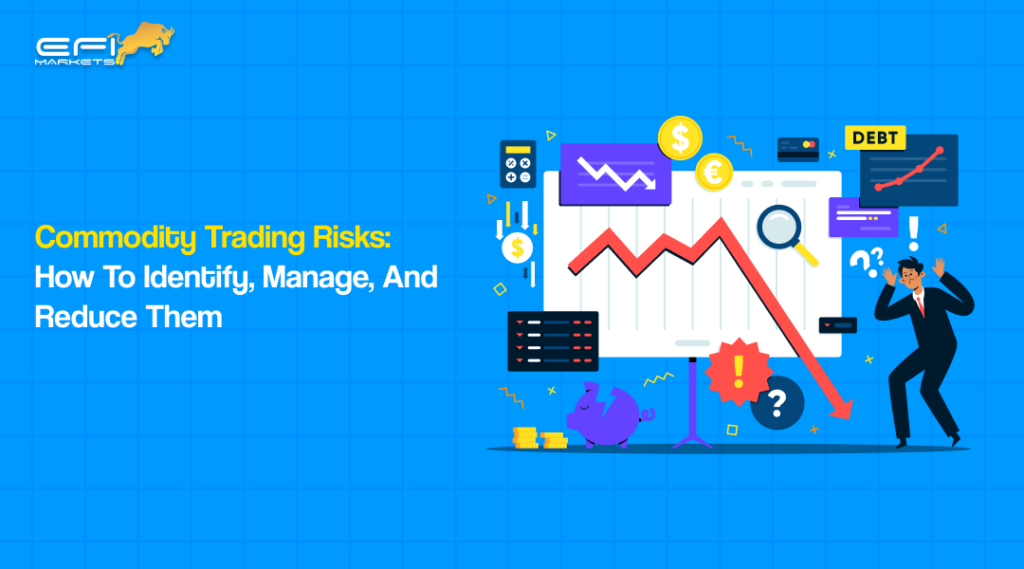
Introduction:
Commodity trading can be an exhilarating journey filled with opportunities for profit, but it’s also fraught with risks that can sink even the most seasoned traders. Understanding these risks is crucial for success in this dynamic market. In this guide, we’ll explore the various risks associated with commodity trading, and more importantly, how to identify, manage, and reduce them effectively.
Commodity Trading Identifying Risks:
Before diving headfirst into commodity trading, it’s essential to have a clear understanding of the risks involved. Here are some common risks traders face:
- Market Risk: Fluctuations in commodity prices due to factors such as supply and demand, geopolitical events, and economic indicators can significantly impact trading positions.
- Liquidity Risk: Some commodities may have limited liquidity, making it challenging to enter or exit positions without causing significant price movements.
- Operational Risk: This includes risks associated with trading platforms, execution errors, technological failures, and regulatory compliance.
- Credit Risk: Counterparty risk arises when trading with brokers or counterparties, particularly in over-the-counter (OTC) markets, where there’s a risk of default.
- Political and Regulatory Risk: Changes in government policies, trade agreements, or regulations can affect commodity markets, leading to uncertainty and volatility.
Managing and Reducing Risks:
While it’s impossible to eliminate risks entirely, traders can employ various strategies to manage and reduce their exposure effectively:
- Diversification: Spreading investments across different commodities, sectors, or geographical regions can help mitigate the impact of adverse price movements in any single market.
- Risk Management Tools: Utilize stop-loss orders, limit orders, and other risk management tools to control losses and protect profits.
- Research and Analysis: Conduct thorough fundamental and technical analysis to make informed trading decisions based on market trends, supply and demand dynamics, and other relevant factors.
- Stay Informed: Keep abreast of news, events, and developments that may impact commodity markets to anticipate and react to potential risks in a timely manner.
- Adhere to Trading Plans: Establish clear trading objectives, risk tolerance levels, and predefined entry and exit criteria to maintain discipline and avoid impulsive decisions.
- Regular Review: Continuously monitor and review trading strategies and performance to identify areas for improvement and adjust risk management tactics accordingly.
Conclusion:
Commodity trading platform offers immense profit potential, but it’s not without its fair share of risks. By understanding the various risks involved, implementing effective risk management strategies, and staying disciplined in your approach, you can navigate the choppy waters of commodity trading with greater confidence and success. Remember, risk management is not about avoiding risks altogether but rather about managing them in a way that allows you to thrive in the ever-changing world of commodity markets.
